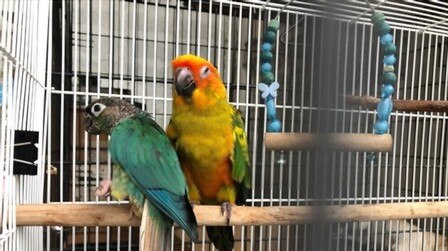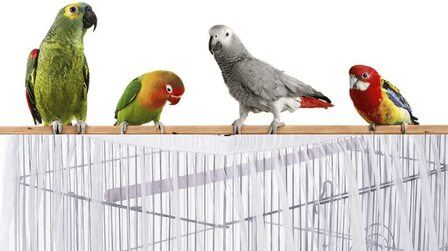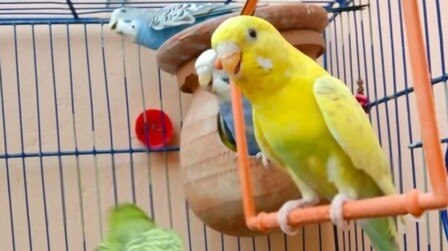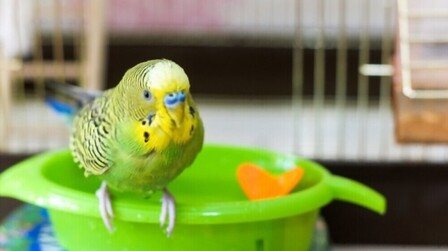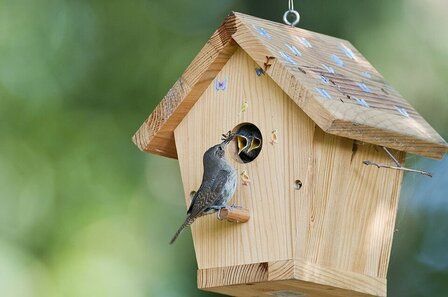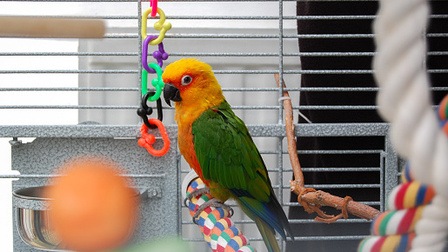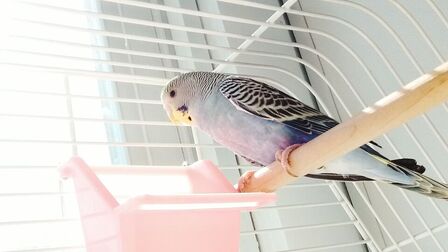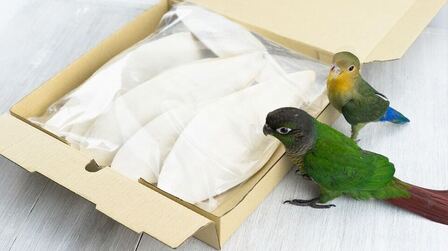If you own a small or large pet bird, this comes with many responsibilities. You have to anticipate many problems and equip your pet with many accessories such as possibly having to transport your bird safely, to check with their veterinarian, to trim nails or trim wings. for your bird.
All of the above characteristics are fulfilled if they are kept in a travel or bird carrier. Below are some notes on how to choose a bird carrier.
1. Lightweight and easy to lift
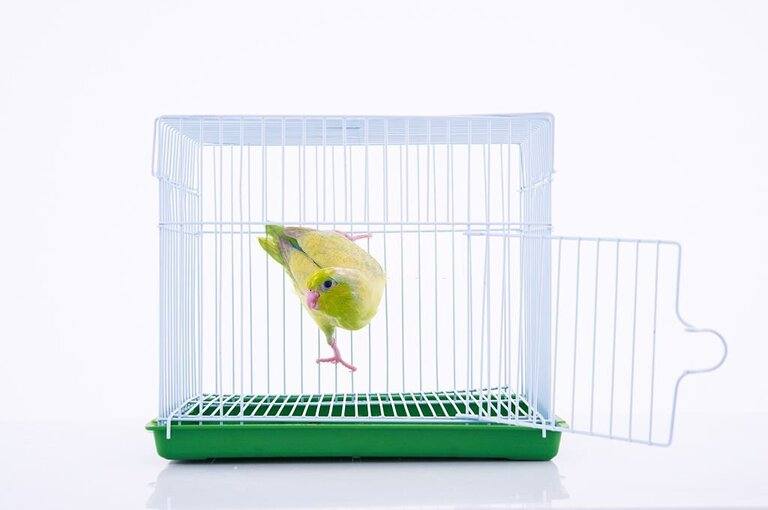
The first thing when choosing a bird carrier is that the bird carrier should be light and easy to lift and clean. It is imperative that cages provide adequate ventilation while minimizing drafts. The structure must be durable, shaped so that the bracket fits the back seat and is likely to warp.
A well-designed travel best bird carrier, made of thick polycarbonate with holes in the surface and a wire mesh door.
Furthermore, they need the necessary ventilation to retain warmth. Transparent polycarbonate allows you to easily observe the bird and also allows the bird to observe its surroundings. Most of these carriers come with an optional "security cover" that fits snugly on the top (for some models, the cover is optional and at an additional cost).
On the other hand, partially or completely covering the cage will help calm the bird when it's in a busy area or when it's time to sleep. As some cages are designed to be attached to and fixed to the chair.
2. Placement and size for bird carrier

Make sure the bird carrier is the right size for the bird. You should choose a bird carrier that is spacious enough for the bird to turn inside, at a minimum. Any type of bird needs a perch, and the placement of the perch is also something to consider when you're choosing a bird carrier.
In addition, some carriers have adjustable perching birds, while in other cases the perching birds are fixed and cannot be moved.
Next, make sure the perch is of the proper diameter to fit the bird's feet and allow the bird to fit comfortably between the canopy and the bird's head. The perch should also be high enough that the tail of the bird does not touch the floor of the carrier.
With smaller birds, you need to pay more attention. Small birds can become stressed in cages designed for larger birds. However, they are easy to escape through the ventilation holes.
3. Construction materials of bird carrier

Owners of birds must consider the possibility that the bird will try to nibble on their object, or be calm and relaxed there. Some small birds such as canaries and sparrows can be transported in a carrier made of sturdy plastic and fabric.
If you have stronger birds that like to chew, like macaws and parakeets, pay special attention to birds that use their beaks to escape. You can glue materials such as aluminum and stainless steel.
For bird carriers make sure you get models with durable bird resistant materials that also feature top quality designs. Almost all the materials that you use to build the nets are very important in the process of raising birds.
4. Types of activities for using bird carrier
Hiking with outdoor activities

Bird carriers will be a great choice when carrying pets for hiking and different outdoor activities, they are also available for different types of birds with different sizes. This type is equipped with different food or drink bowls. Some come with covers and perches to give the birds shade and a natural setting if needed.
Short trips to the bird

A simple bird carrier is very useful when taking the bird out when it has to go to the vet. You can put it on the back seat of your car and its simplicity with strong impact makes it easy to live and care for the bird.
Overnight stay

Air travel

If you plan to fly with your bird, you must get an airline approved by the airline.
Because there will be many size restrictions depending on the airline that will regulate whether or not your bird can be kept under the seat. Research the airlines you plan to use and their regulations.
Emergency precautions in the event of a storm

5. Tips in using the bird carrier
- When you have decided to choose a satisfactory bird backpack model. Before you decide on any trip, make sure the bird has had a chance to get used to its surroundings.
- This saves you time, but is essential to reducing bird stress.
- For added comfort, you can purchase a bird backpack that resembles their home. It will reduce the time it takes for your pet bird to accept the new environment.
- You can place the bird carrier's backpack in the bird's room and let the bird get used to treating the object as a non-threatening object for a few days.
- Or put some snacks inside the bird bin as the birds roam freely in the room.
- Practice getting your bird to drink from a water bottle. This skill is very important to learn when the bird moves.
- It is necessary to ensure health and the bird has been verified before starting the trip.
- Always fasten your seat belt in the back seat safely for bird carriers. Front seats are very important and dangerous because airbags can cause injury and problems for birds.
- Some of your bird's favorite treats and treats to use during the trip. Also, bring a first aid kit and some grooming supplies to help in an emergency.
- Never leave a bird unattended in your vehicle, even for a short time.
6. Species

Passerines (finches and canaries) are safely transported in plastic bird carriers. Acrylic and wire carriers are more suitable.
Smaller species can pass through openings while bird carriers are designed for larger birds. Many small species are also stressed from being in a larger transport vehicle.
7. Ability to manage

Whatever size and shape of vehicle you choose, it should be easy to handle and carry and easily fit into your vehicle.
At the same time, the stand must be made of a material that is strong but light enough to move comfortably.
The handle at the top is a great feature and allows for easy fastening of the seat belt. Larger and heavier species may also require a shoulder strap.
8. Hygiene

Most racks should be designed to open for easy cleaning. The fewer nooks come with the better crannies.
The bird carrier has a sliding tray that is easy to clean without letting the birds escape.
The bottom blister is also handy for keeping birds separate from dirty or paper-lined substrates.
9. Bird carrier substrate

You can use paper liners on the bottom of the stand to reduce slippage during transport, but it is not hygienic when the bird's feet are contaminated with feces.
And if you choose to use the substrate on the bottom of the stand for cleaning, a solid-sided, hole-free top-half rack is better suited to reduce clutter. Look for phenol-free substrates that should be used in carriers with limited ventilation. Instead, background paper is a great choice.
10. Food and drink bowls

The food and water bowl attach easily to the bird stand. Pets have easy access to them and can be easily removed for cleaning by a caregiver.
Water bottles minimize spills and monitor consumption. Teach your bird how to use a water bottle to make sure he's drinking enough while traveling. Invest in a bowl of water for a long trip or very hot climate, which is great.
Conclusion
A good bird carrier will help protect your bird, while reducing factors affecting the movement. This leaves the bird less vulnerable and ensures a better ride.
Through sharing how to choose bird carrier, we hope you can understand better and find the best product.

